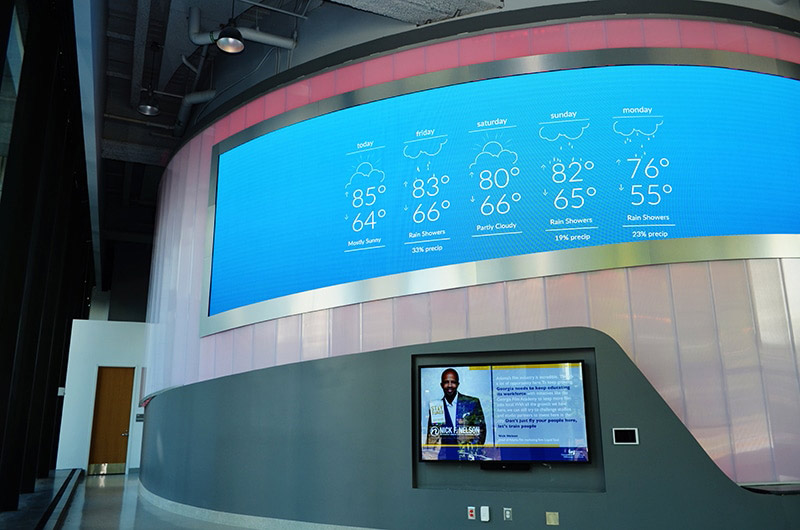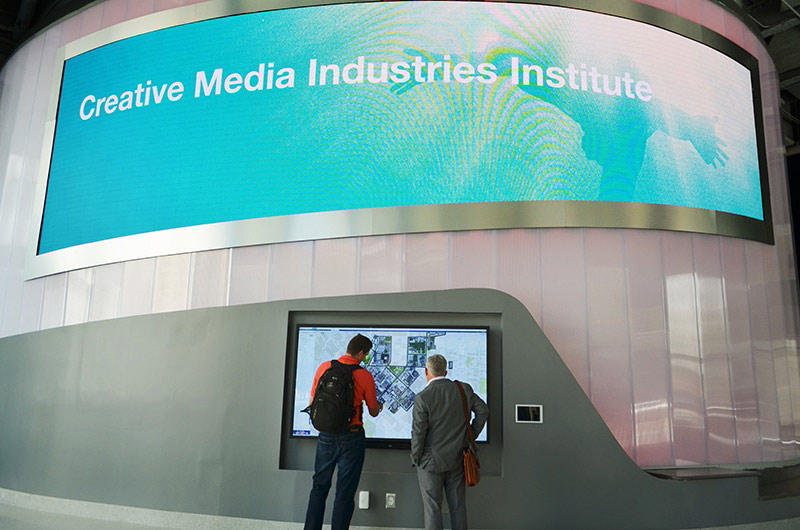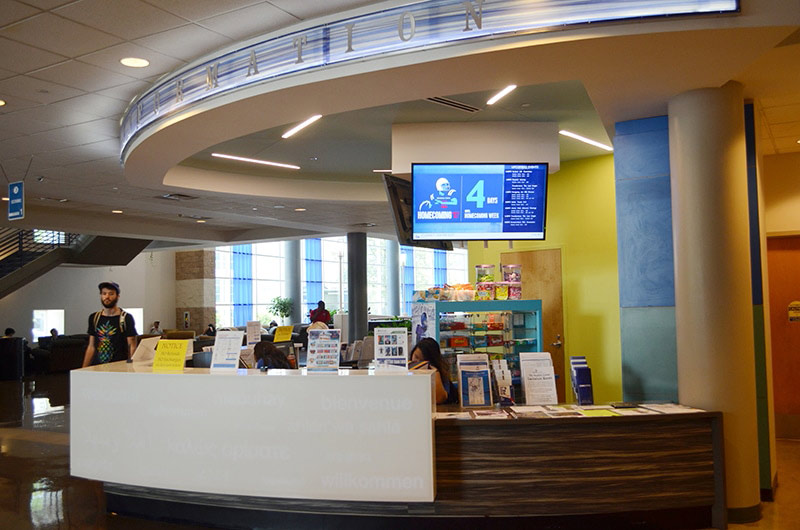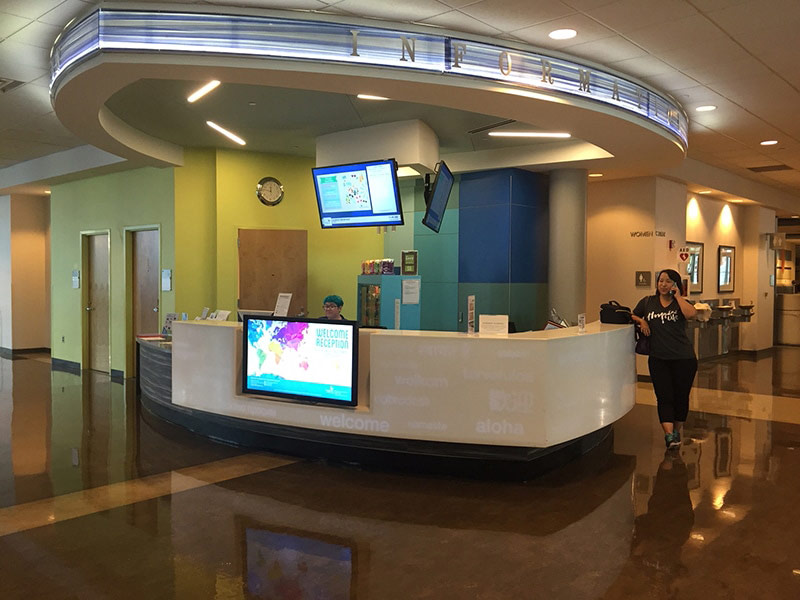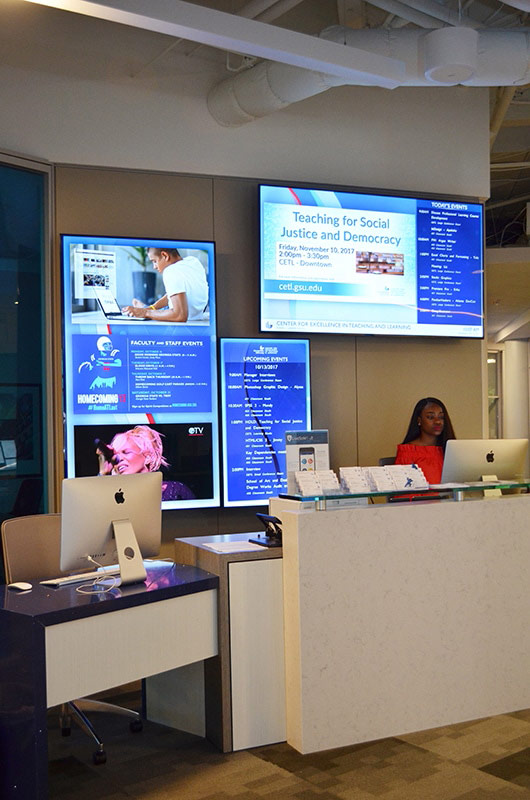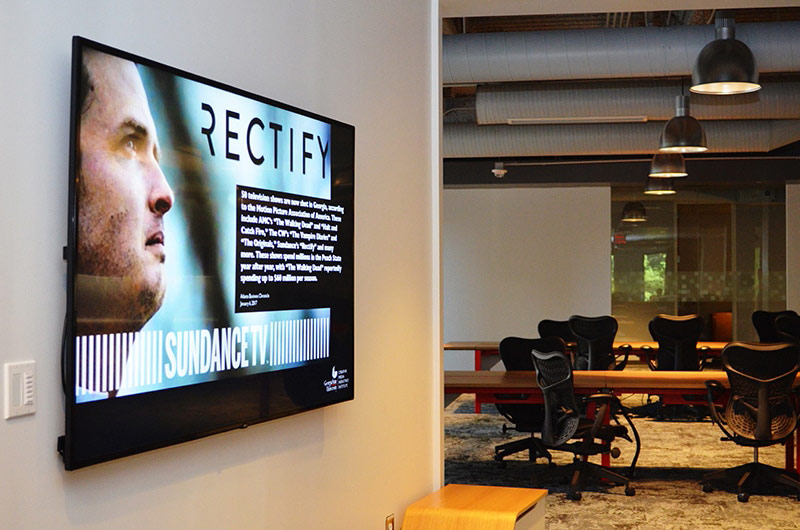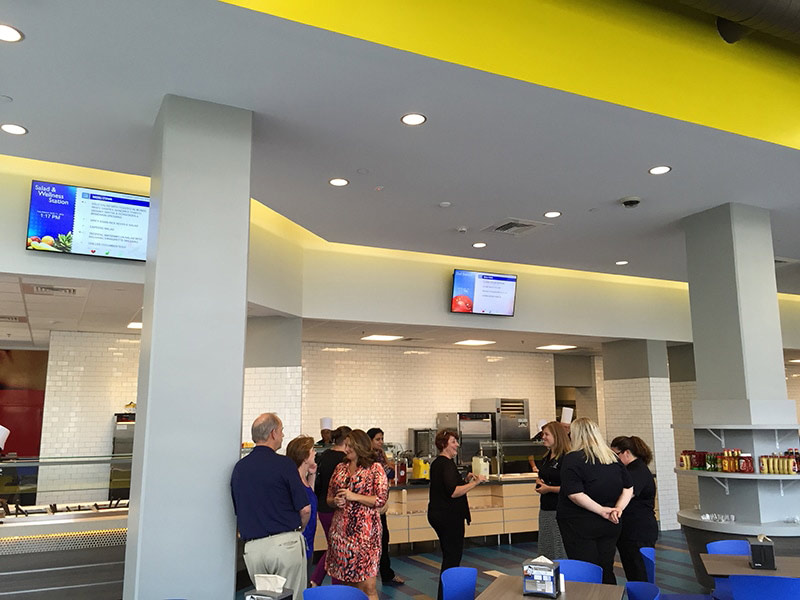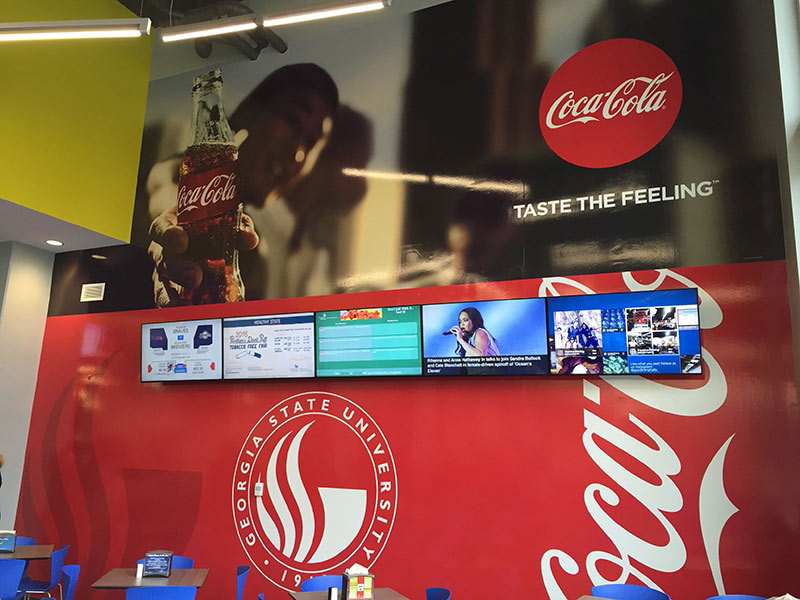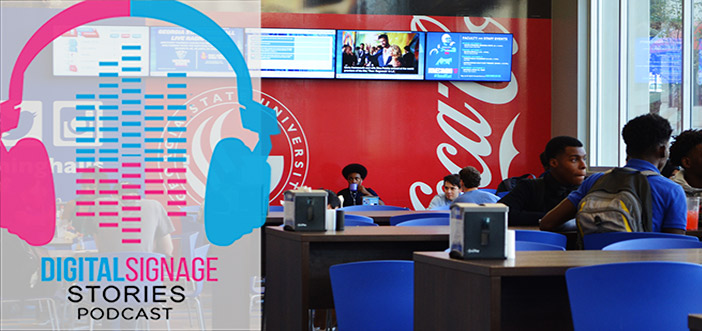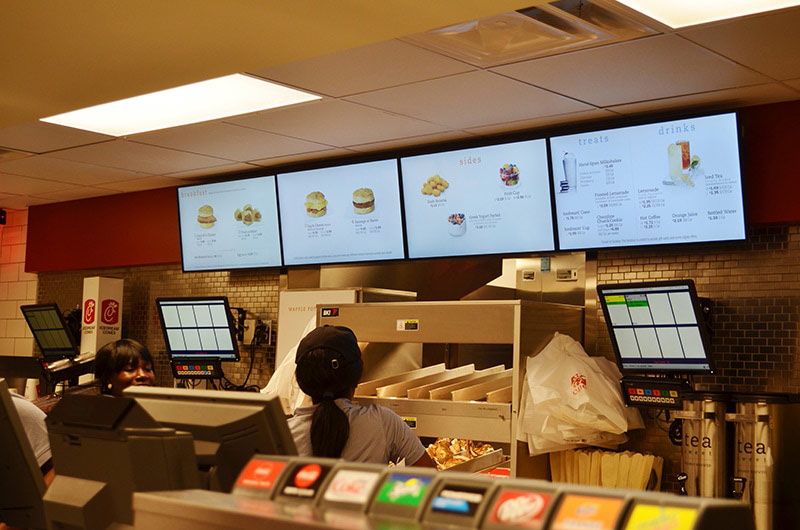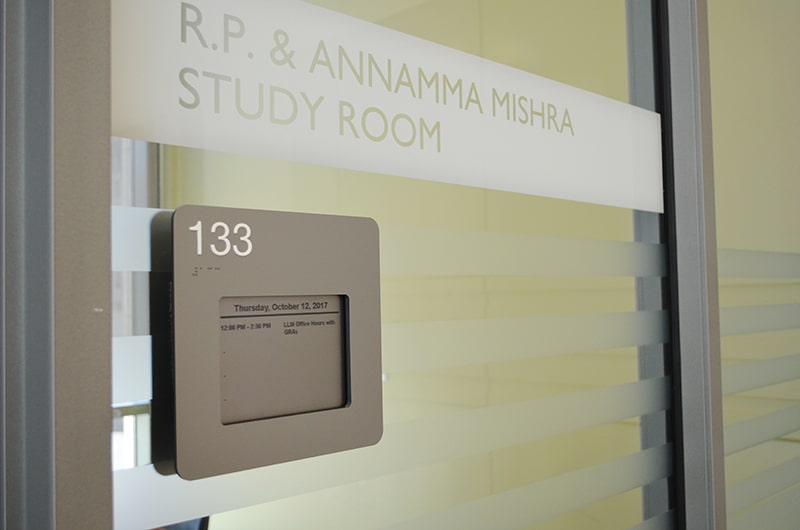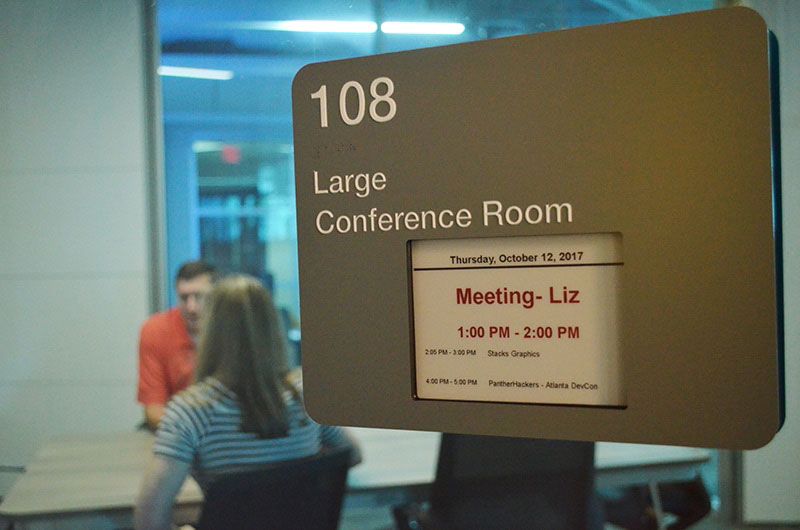Georgia State University (GSU) has six campuses in metro Atlanta, serving 55,000 students and 2800 staff. The main campus in downtown is 71 acres and has 60 buildings. That’s a lot of ground to cover, so when they decided to get an enterprise-level digital signage system, they needed to license 300 media players to target their displays, as well as their room signs and electronic paper signs, to reach audiences across all their properties. AxisTV digital signage software was the answer.
Background & Objectives
The Public Relations and Marketing Department manages the deployment, sending visual communications about the university, specific departments and events to students, faculty, staff and visitors. GSU knew that digital signs are an ideal way to target modern audiences on the move who are already used to receiving information visually.
Some of the digital signage messaging they show includes:
- Programs
- Meetings
- Activities
- Weather, date & time
- Campus news
- Campus facts and general information
- Social media feeds
- Television feeds
- Current events
- Emergency alert messages
They had four main objectives when choosing a digital signage system:
- To affect behavior – specifically to increase event participation and reduce the number of questions asked about events
- To provide alert communications in the event of an emergency
- To reduce the cost and clutter of printed information materials like flyers, posters and placards
- To reinforce the University’s progressive vision to existing and potential new students
Challenges & Solutions
The various departments of the university were reluctant to give up control of their communications, so it was necessary for PR & Marketing to convince them of the benefits of the digital signage system. On the more practical side, there was also a large interdepartmental network with subnets and wireless access points that needed to be reconfigured in order to support the increased security and consistent playback of digital signage messages.
Once all departments were convinced to commit to the technology, the next challenge was effectively adopting it to their processes and needs. Crafting a steady stream of content to keep students informed can seem like an overwhelming amount of work, so editable templates were employed to ease the burden, enabling messages to be created with a standardized on-screen brand look and feel. GSU also adopted auto-updating content subscriptions and data integration with various event management systems, making it easy to instantly deliver up-to-date content across campus for things like events, classes, presentations and other activities with scheduled times and locations.
In the event of an emergency, the AxisTV system is CAP compliant (Common Alerting Protocol), making the new alert capabilities an integrated part of GSU’s multi-layered alert notification system.
To effectively target larger audiences, video walls and display clusters are positioned in high-traffic areas. A 100’x20’ NanoLumens video wall graces one high-profile entrance. Printed placards and posters have nearly been completely replaced with video walls, large displays, electronic room signs and menu boards in buildings, public venues, the campus arena and football stadium.
Today’s students spend a lot of time interacting with information and each other online (through social media and the like), so the AxisTV deployment incorporates the ability to gather feedback via public displays in locations such as the food services area. Staff responses are also publicly displayed as part of an ongoing conversation with the student body.
Results
The results of this expansive digital signage deployment exceeded expectations by reducing campus-wide poster printing costs by more than 40% over twelve months. Centralized control of media and playback enabled a dedicated champion to expand campus-wide adoption 200% in two years and provided GSU with the necessary leverage to lock in a site license, saving tens of thousands of dollars in annual fees.
When the university opened the main entrance to the Creative Media Industries Institute to more than 150 industry professionals, the digital signage provided a “wow factor” that met and even exceeded the expectations of facility staff.
Interactive wayfinding kiosks around campus have also helped reduced the number of questions people need to ask, adding to improved morale and satisfaction ratings for everyone – students, visitors, faculty and staff.
The scope and effectiveness of the digital signage deployment also helped the university achieve its #4 ranking by US News & World Report in the Most Innovative University category.
